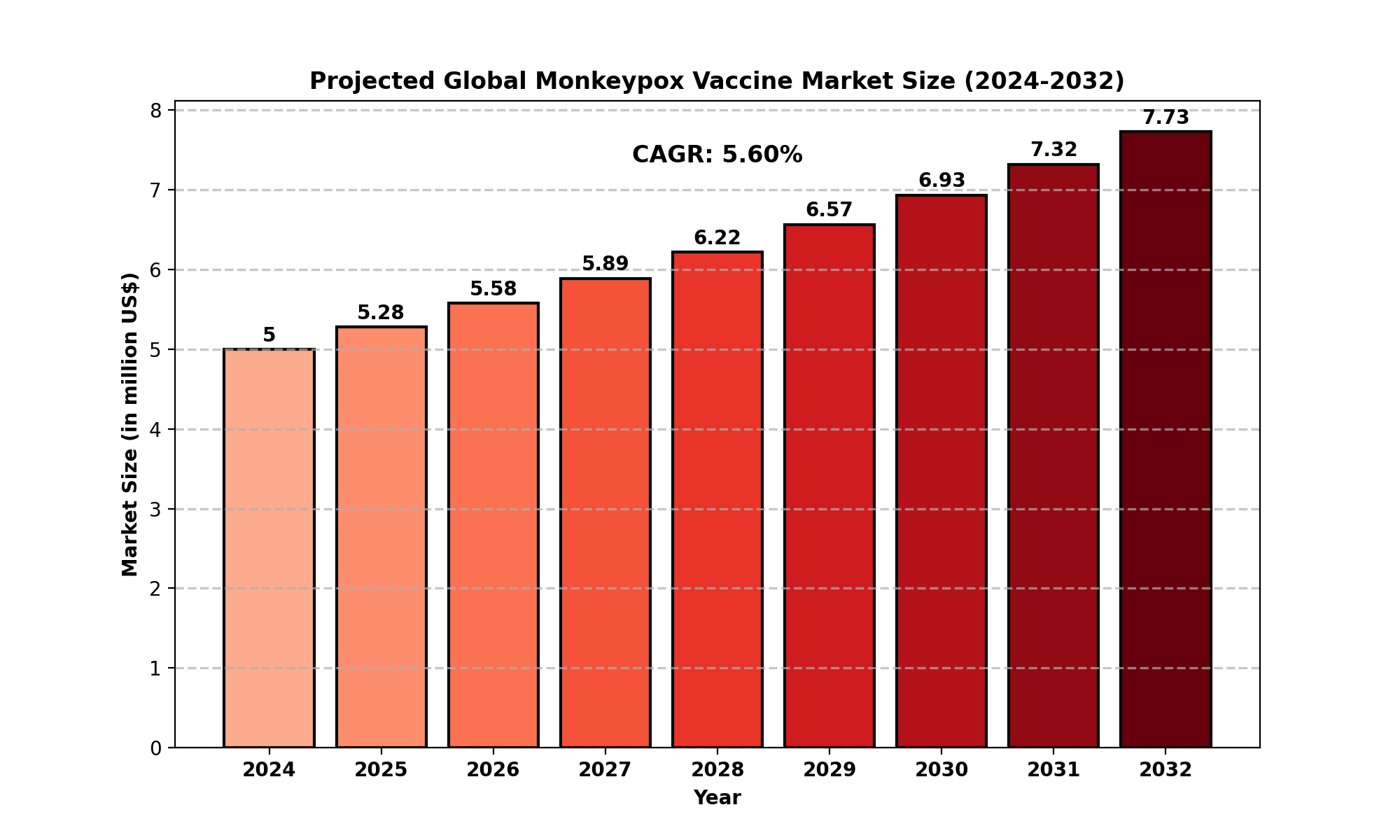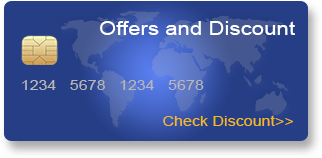The global Monkeypox Vaccine market pertains to the development, production, distribution, and sale of vaccines designed to protect individuals from the monkeypox virus. Monkeypox is a viral zoonosis (a virus transmitted to humans from animals) with symptoms that resemble smallpox but are less severe. It is primarily transmitted from animals to humans and can spread through direct contact with infected individuals or animals, making vaccination a crucial public health measure. With the eradication of smallpox, monkeypox has emerged as the most significant orthopoxvirus, especially in regions such as Central and West Africa. However, due to its rising incidence, there has been increased demand for vaccines to combat the virus and prevent further outbreaks.
These vaccines are being developed using various techniques such as DNA-based vaccines, non-replicating viral vector vaccines, protein subunit vaccines, and RNA vaccines, each aiming to induce immunity against the monkeypox virus. The increasing incidence of monkeypox cases, particularly in non-endemic regions, has elevated the importance of these vaccines globally.
Market Size
The Monkeypox Vaccine market was valued at USD 5 million in 2024 and is projected to expand at a compound annual growth rate (CAGR) of 5.60% from 2024 to 2032, reaching an estimated value of USD 7.73 million by 2032.
The market size reflects growing concerns over outbreaks of monkeypox and the increasing efforts by health organizations to provide vaccines as a preventive measure.
Several factors contribute to the market's expansion, including the ongoing development of more efficient vaccines, increasing awareness of zoonotic diseases, and heightened government spending on public health measures. Additionally, advancements in vaccine technology and manufacturing processes are expected to play a critical role in meeting the growing demand for vaccines.

Market Dynamics (Drivers, Restraints, Opportunities, and Challenges)
Drivers
Rising Cases of Monkeypox: The increasing number of reported monkeypox cases, especially outside endemic regions, has triggered global concerns, pushing governments and health agencies to seek protective measures like vaccination.
Government Funding: Countries and international organizations are increasing investments in the development and distribution of monkeypox vaccines to curb outbreaks. For example, the U.S. government has already allocated funds for the procurement and distribution of vaccines to affected regions.
Public Awareness: There has been an upsurge in public awareness regarding zoonotic diseases, leading to greater demand for preventive measures such as vaccines.
Restraints
High Vaccine Development Costs: The development and approval of monkeypox vaccines require significant investments in research, clinical trials, and manufacturing. These high costs can delay the availability of vaccines in certain regions.
Limited Awareness in Non-Endemic Regions: Although the awareness of monkeypox is growing, it remains low in regions outside Africa, leading to delayed vaccine adoption in some areas.
Regulatory Hurdles: Vaccine approvals are often delayed due to stringent regulatory requirements, slowing down the ability to respond quickly to outbreaks.
Opportunities
Expansion in Non-Endemic Regions: As monkeypox cases rise in regions outside of Africa, there is an opportunity for market players to enter new markets, particularly in North America and Europe.
Advancements in Vaccine Technology: The development of novel vaccine platforms, such as RNA-based vaccines, offers opportunities to improve efficacy and reduce production costs.
Strategic Partnerships: Partnerships between vaccine manufacturers, government agencies, and international health organizations will facilitate faster distribution and increase the global reach of the vaccine.
Challenges
Unequal Access to Vaccines: In low-income countries, access to vaccines remains a challenge due to logistical, financial, and infrastructure limitations.
Vaccine Hesitancy: The perception of vaccine safety and effectiveness can hinder the widespread adoption of the monkeypox vaccine, especially in regions where people are skeptical about new vaccines.
Shortage of Manufacturing Capacity: Meeting the global demand for monkeypox vaccines requires ramping up production, but many manufacturers face challenges in scaling up quickly.
Regional Analysis
North America
The North American market for monkeypox vaccines is poised to grow at a moderate pace, with a projected CAGR of 4.80% from 2025 to 2032. The increasing number of reported monkeypox cases in the United States, Canada, and Mexico is fueling the demand for vaccines. The U.S. government has already initiated steps to procure vaccines, ensuring that the country is prepared for potential outbreaks. Furthermore, the well-established healthcare infrastructure and substantial healthcare expenditure in the region provide a favorable environment for vaccine distribution.
Europe
Europe is also experiencing a surge in monkeypox cases, particularly in urban areas, prompting governments to take swift action. The European market is expected to witness steady growth, driven by increased public health campaigns and vaccine rollout programs. Countries like the UK, Germany, and France have already begun stockpiling vaccines in response to monkeypox threats.
Asia-Pacific
The Asia-Pacific region is witnessing a rise in demand for monkeypox vaccines as more cases are reported. While the region remains largely unaffected, governments are proactively securing vaccine supplies in anticipation of future outbreaks. The growing healthcare sector, increasing awareness, and governmental support make the Asia-Pacific region a significant player in the global vaccine market.
South America
South America is gradually recognizing the importance of monkeypox vaccines, especially in countries like Brazil and Argentina. However, the market in this region is still in its nascent stages, with slower adoption due to limited healthcare infrastructure in some areas.
Middle East and Africa
The Middle East and Africa have the highest incidence of monkeypox, with a significant portion of the market in Africa, where the disease is endemic. Despite challenges in healthcare access, the demand for vaccines remains high in the African market due to government efforts to control outbreaks. International health organizations are playing a crucial role in distributing vaccines to this region.
Competitor Analysis (in brief)
Key Companies
Bavarian Nordic: Known for its Imvanex vaccine, Bavarian Nordic is one of the leading companies in the monkeypox vaccine market. The company has received support from the U.S. government for large-scale distribution.
Johnson & Johnson: With extensive experience in vaccine development, Johnson & Johnson has the capability to expand its portfolio to include monkeypox vaccines.
Emergent BioSolutions: This company is involved in the production of vaccines for various infectious diseases and is exploring opportunities in the monkeypox vaccine market.
Pfizer: Pfizer's expertise in vaccine development could allow it to enter the monkeypox vaccine market, particularly with the growing demand for such vaccines.
Global Monkeypox Vaccine: Market Segmentation Analysis
This report provides a deep insight into the global Monkeypox Vaccine market, covering all its essential aspects. This ranges from a macro overview of the market to micro details of the market size, competitive landscape, development trend, niche market, key market drivers and challenges, SWOT analysis, value chain analysis, etc.
The analysis helps the reader to shape the competition within the industries and strategies for the competitive environment to enhance the potential profit. Furthermore, it provides a simple framework for evaluating and assessing the position of the business organization. The report structure also focuses on the competitive landscape of the Global Monkeypox Vaccine Market. This report introduces in detail the market share, market performance, product situation, operation situation, etc., of the main players, which helps the readers in the industry to identify the main competitors and deeply understand the competition pattern of the market.
In a word, this report is a must-read for industry players, investors, researchers, consultants, business strategists, and all those who have any kind of stake or are planning to foray into the Monkeypox Vaccine market in any manner.
Market Segmentation (by Application)
Adult
Child
Market Segmentation (by Type)
DNA
Non-replicating Viral Vector
Protein Subunit
RNA
Others
Key Company
Bavarian Nordic
Geographic Segmentation
North America (USA, Canada, Mexico)
Europe (Germany, UK, France, Russia, Italy, Rest of Europe)
Asia-Pacific (China, Japan, South Korea, India, Southeast Asia, Rest of Asia-Pacific)
South America (Brazil, Argentina, Columbia, Rest of South America)
The Middle East and Africa (Saudi Arabia, UAE, Egypt, Nigeria, South Africa, Rest of MEA)
FAQ
What is the current market size of the Monkeypox Vaccine?
Which are the key companies operating in the Monkeypox Vaccine market?
What are the key growth drivers in the Monkeypox Vaccine market?
Which regions dominate the Monkeypox Vaccine market?
North America, Europe, and the Middle East and Africa are expected to dominate the market due to the rising number of cases and governmental actions.
What are the emerging trends in the Monkeypox Vaccine market?
Emerging trends include the development of RNA-based vaccines, strategic partnerships, and expanded access to vaccines in non-endemic regions.
Key Benefits of This Market Research:
Key Reasons to Buy this Report:
Frequently Asked Questions ?
